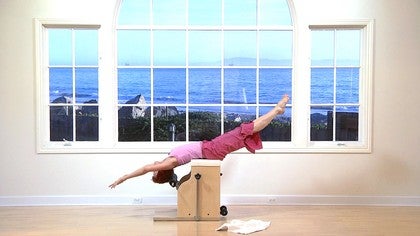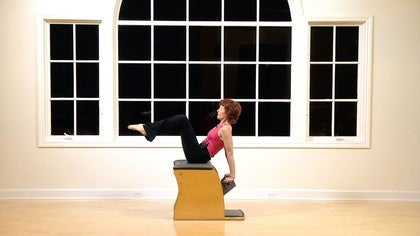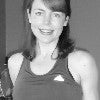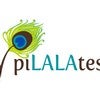Description
About This Video
Transcript
Read Full Transcript
So today I'm going to do a little bit of a chair routine with the focus being on feet and ankles and legs and bumps because we all want to have tone bums but also really for the strength and the flexibility of the feet because balance can become an issue as you get older. And most of us walk around and choose all the time so the feet get a little tight. So to start with we're going to do the towel exercise, which is a very old traditional exercise that actually ma, Ramana used to give older people where she had them put a towel on the floor and then just start to pull it up with the toes as I'm doing so that you exercise both the toes and the metatarsal goals and you can do them together or you can do them one at a time and you keep on going, crunching them in until the whole towel comes under your art. So it actually takes a little bit of work about get there, get there, get there or, and when people start they can have quite a bit of trouble doing this because the toll is really a pretty stiff and tight and the the, the area with the knuckles are, is can get jammed up and doesn't work very well. So wonderful to do whether you do it well or badly, I will say I got them most of the towel under me and now you push the towel out again. So you're basically, I'm lifting, crunching my toes and pressing them out, lifting, curling my toes under me and spreading it out.
So I'm pushing that towel out again to move it out and highly recommended. If you're very stiff to do this about three times and wonderful, wonderful things start to happen to the feet after you've done that. Just lifting the arches a few times. Basically what I'm doing with my feet is I'm lifting the arches up and pulling the toes in, sliding them in to start to stimulate the arch of the foot again and wake it up a little bit. Standing up rolling to the outside of the feet, so really opening up the foot one way, rolling onto the inside of the foot, back and forth to get the mobility in the ankle. Ankle should be a very loose joint, but again gets very stiff, very tight and starts to become rigid and then it can no longer support balance and flexibility.
So moving the ankles back and forth to start to strengthen or just loosen up the foot and then standing, lifting the toes a few times, looking to get all five toes off the floor while keeping the arch lifted. So I'm not letting my arch drop down. I'm lifting the r-chop, so I'm feeling the center of the heel, the little toe and the big toe joint down as I'm lifting the r-chop, so maybe half a minute, a minute of working the arches. Then coming onto a cable. Today I'm going to be using the chair, but you can use two by four board ledge. If you don't have a ledge, you can just do this on the floor. Standing up. I'm going to hold a side.
You could be holding onto the wall or a ledge or something, lowering the heel as low as you can, bending the knees, rolling the heel up as high as you can, and then straightening back up again. So what I'm focusing on as I do this is keeping the knees and the feet facing straight, keeping the arches lifted, keeping the whole, all of the foot wide. So all five toes are pressed onto the floor without the ankle rolling in, rolling out and stretching back up again. I'm just gonna move a little bit closer here. So lowering down, bending the knees, so the arch of the ankle is worked. Lifting the heels as high as they can go up and down.
And one more time. Lowering, bending, rolling up, lifting up high and lowering back down to flat. And then the reverse is lifting up, bending, rolling the heels down and straightening up, lifting up. So now I'm thinking of the whole body being lovely and law bending right here. I'm starting to really force the art. Most people will want to drop the ankles way down.
So really making those toes bend a lot because again, that's an area that gets really stiff and locked up and starts to lose mobility. Totally lifting up, bending, pressing the heels down, straightening. And one more time. Big Lift Bend. Press the heels down and straighten up. And then I step off if I'm doing this on a ledge of some sort.
The truth is this whole routine can easily be done on the floor. So if a person has sniff tight legs, feet locked up, feet, they're a little bit older, the feet are more rigid. I usually give my clients, this is homework, go and do this every night before you go to bed or before you get up in the morning. Within a week or two, I can see a huge difference in their legs. Then starting to do some work on the chair. So starting out with footwork, plotty stance. Today we're going to do with the feet and v I'm placing myself halfway back with my knees, with the shoulders, just starting with nice pumps and as I do the pumps, I'm keeping the stomach lifted.
So I feel this lift in the center of the body as the legs are pumping down, pumping down, holding, lifting up, pumping down, holding, lifting up, pumping down, holding, lifting up, pumping down, holding, lifting up. Same thing with the feet parallel and the heels are lifted. So here I'm starting to apply of five toes down. The center of the ankle is going straight forward, the knee straight forward. And again, now I'm really starting to pay attention to the leg tracking straight from the knee through the foot, making sure that I'm, I'm not rolling out, not rolling in.
So there you can play with rhythms. As you do this, I'm going nice and steady but I can start to work the rhythm a lot faster. And then to add intensity in variety at hold, release, press down, hold. And as I release I lift the legs in through the abdominal area. Hold and lift and hold and lift. Moving on onto the heels. The feet are hip with the park.
Nice lift. Just to add more intensity, I'm going to lift the arms up. So again, pumping. Now the focus is very much that the weight is going through the center of the heel and the knees and the toes and the hips are all tracking straight together and pressing down, holding, lifting, pressing down, holding, pressing down, holding, pressing down, holding, pressing down, holding and lifting, subbing, working to a certain extent with the quad and just because we're, we always want to look good. I'm going to go into lifting bottoms up to keep my bottom up nice and high because we all want high bums. So two ways you can go into this. You can start down, lift the hips and then start your pumps from this position, which will work nicely into the hamstrings in the bottom, keeping the chest and the shoulders. Why and keeping the hips lifted. The other way is starting with the feet high, lifting the hips up and then pushing down.
So just two fun variations that are very stimulating on more than just your mind so that you can really get your buttocks working, your hamstrings working and your lower back being strengthened as you do this. Just to go into the opposite, moving around to the other side, coming into the hundreds. Fun To do when you're over the edge because then it's a real test to see that your abdominals are really working nicely. You can play with different heights. I'm going to stay at this level today, so slow breath out, slow breath in and one more time. Slow without slow breath in and bringing the legs and now if you notice I was pretty far over the edge and I found as the legs came in I was going to fall back.
So that's what's fun about being over the edge because it challenges you a whole lot more to fam. That next level of your power has to going into double leg stretches just to make it super interesting. Now this place over the edge like that means that I'm working a whole lot harder in my powerhouse and those want to be super in defense, can play with a few fun variations of them going back and coming up and hopefully not having to talk at the same time because it definitely makes you work a lot harder. And then coming back to the feet, going from higher up to lower down, coming back to the ankles and pressing down the legs along. My feet are arched and if you notice my knees are at a set place and the knees don't move at all and I'm working through the feet, lifting and lowering the ankles. Again, an area to really find out a lot about your own ankle.
My left ankle is a lot more stable, unstable than my right, so I have to focus a lot more because it wants to roll out and roll in. And the whole intent is that the role of the foot goes right through the center with the heel tracking, right with the center of the foot and the kneecap facing right through the center. So this is one variation. Now I'm setting my toes, my feet in one place. My knees just went up. Now my knees lower. So now the challenge is to keep the step in one place.
So a lot of isolation really takes a certain amount of detail. It means that there's a lot of detailed being asked of the ankles and the legs. Consequently strengthening them a huge amount and then coming out, stepping off from here, working a little bit more into the ankles, bringing this ledge down right below the kneecap into that soft spot underneath the kneecap. I'm placing it right on the corner and stabilizing the leg, the knee with my hands wrapped around and if I was to look at the foot, the bend of the ankle is right in the center of the foot and the heel is tracking with the center of my calf and then going down and up with the ankle. Very, very therapeutic, very strengthening on the foot, actually.
Fabulous, fabulous work for ankles. People who've had sprained ankles unsteady with their balance, it actually makes your legs a whole leg, becomes a lot more tone because they ankle in the foot become more developed and sophisticated with this sensitivity. All the muscles in the legs fire in far more detail. There's just a sophistication that comes into the whole leg because of the wisdom of the foot waking up, which is wonderful to feel and to see because there's a grace that comes into the movement as a result of this. So doing the other leg, let me get my baggy pants out of the way. So working down and up as I press down, I'm really focusing with all five toes stay present, which takes some work because all of us have different kind of fee.
Sometimes a little toe wants the fly up or the big toe takes too much way too, not enough weight. So it's a way of really working to be careful to track straight through the foot. By the way, this can be very useful for Bunyan's because you want to make sure the big towel was being pulled straight as best as possible too. You meet, train that part of the foot to be challenged correctly in a way that stimulates correct harmonious bone alignment. Love this. I've had a lot of foot and knee issues in my time injuries and these were wonderful work for me. So did a little bit of work in the legs. Little burb work in the buck, little bit warden, the ankles and the feet and now just working all the way up the legs to pull.
Stepping up can be done on a high chair or the one that chair, so the heel is high, the arms are long and my knee is just about over my foot. My hips are square to the side, so just going up and down, working with this front leg. Now as I'm doing this, I'm holding trunks and my powerhouses nice and stable. My hips are narrow. I'm facing exactly to the side. I can lift my arms to here just so that you can see there's a lot of different ways you can go with your hands, so a lot of work into the quad of the working leg and then you finish, you switch onto this side. You can go into a balance lifting high on the hip of the standing leg going all the way around. If I was spotting someone doing this, I usually will hold their hand so that they can figure out how to balance the body and then more basic, you put your hands on the floor, more advanced, you step down and you release the step without it flying out.
Let's see if I can do this on the other side. So lifting up nice. I'm basically now already, I'm concentrating on this side of the body, anchoring my powerhouses I first down and then the shift of weight is very detailed. From this point on, this leg will be doing the work. So I am focusing on the line that runs from my head through my heel, lifting up through the spinal column and reaching out through the back leg and then coming to the top, standing up. So now my focus is all walks the daisy this side, lifting the leg, bringing it around all the way around. So the whole time this side is working very, very hard. Lifting up to get the weight out, reaching down queers, that step anchoring, nice and slow. Long body stepping down, lifting the step back up. And you know what? My legs have had a fantastic workout. Hope you enjoy it.
Thank you very much.
Wunda Chair Workouts: Intermediate Classes
Comments
Happy Holidays.
Tiffany - If I did not get on and off the chair so I must have kept the springs at one tension, I am looking at the chair and it is a balanced body one - so yes I expect it was 2 middle springs ( sorry not to be more specific, the filming was done months ago and I simply don't remember, but knowing me, I tested the Spring tension before my workout, and set a tension I felt could support my workout for my strength and body weight.)
Anita, glad you enjoyed the workout and you sound like you give a lot of support and good value to your clients as a teacher - keep up the good work.
Thank you for your comments and next time I will make sure to explain the spring settings I am using in the routines. I believe I had everything at one setting in this recording , although I am not sure about this - it was filmed while ago. Probably a medium tension setting.
I too love the pull ups and press downs and spine stretch exercises so will add them in next time I film a chair routine.
Happy new and "pulled in and up" New Year to you
I knew this was a "mini" workout coming in so I did Amy's spine corrector workout in addition, the combination worked great. I have loved all of your Chair and Reformer workouts as your cuing and flow is inline with how I like to be taught. I did not see you change springs and I kept mine the same also. I think it is an individual thing based on capabilities but in this medium worked all the way through.
and I am a little over the edge myself ;) ;)
You need to be a subscriber to post a comment.
Please Log In or Create an Account to start your free trial.
























